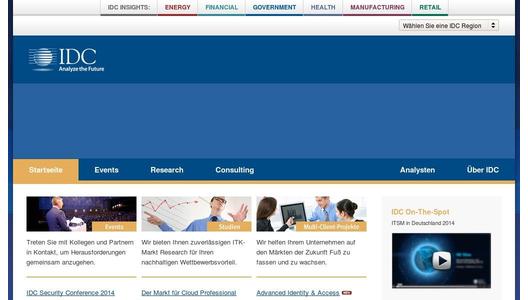Apple’s need to develop the enterprise market for iPhones is imperative – and the same applies to iPads, albeit to a lesser extent. The consumer market for these devices mainly comprises affluent people in developed economies, and that is now a mature and highly competitive smartphone market. In search of additional markets, Apple cannot look to developing economies, or to the mass-market in developed economies, without making mid-price and low-price iPhones. This is a move that Apple has resisted so far, and that would run counter to its very successful product strategy. Therefore, for future iPhone sales growth, Apple will rely increasingly on enterprise customers.
Strong inroads to the enterprise have already been made by Apple, initially in combination with solutions for mobile device management (MDM) to make the devices sufficiently secure and manageable for enterprise adoption. More recently, iPhones have become more inherently enterprise-friendly, through the security and management capabilities that were built into the platform with the release of iOS7. Doubtless there will be more of that to come, with upcoming new releases of the product and platform.
But the market for mobile enterprise management (MEM) is evolving, as IT departments move into a more mature phase in their approach to mobility. Rather than the heavily device-centric approaches that have predominated so far, enterprises’ mobility developments are becoming increasingly application-centric. The fundamental reason for this is that as their attitudes mature, enterprises increasingly seek to use mobility to build competitive advantage. Devices themselves are not a source of sustainable competitive advantage, because the same devices that are available to an enterprise are also available to its competitors. Instead, competitive advantage stems from the things that an enterprise does with its devices; that is, from applications.
In this more mature phase, enterprises need to integrate mobile devices and applications with existing enterprise applications, software infrastructure and back-end systems. This leads to an increasing importance, as indicated by IDC’s enterprise research, of IT service companies as preferred sources of supply for MEM solutions. Therefore, to continue its strong progress in selling iPhones and iPads to enterprises, Apple will rely on channel partners who can offer enterprises the “heavy lifting” that will increasingly be required in areas such as mobile application development, lifecycle management and systems integration.
In IBM, Apple has forged a relationship with one of the strongest such partners around. As well as its cast-iron credentials as an enterprise IT brand, IBM brings to the partnership an increasingly mature set of capabilities in the area of enterprise mobility. IBM’s capability in mobile application development is founded on Worklight, which it acquired in early 2012; and its more recent acquisition of Fibrelink adds MEM to the mobility toolset that IBM has at its disposal. The combination of IBM’s mobility competencies, and the large investments in marketing that IBM is making in its “Mobile First” practice, will provide Apple with a solid platform upon which to build and extend its enterprise business.
What does IBM get out of the deal? Most of all: huge end-user pull. This is an increasingly important asset when pitching to the enterprise, partly because bring-your-own-device (BYOD) has, in effect, devolved some of the selection and procurement of devices to end users. But even in enterprises that have not embraced BYOD, IDC’s research indicates that IT departments place increasing weight on end-user preferences in their mobile selection and procurement processes. There are two main reasons for this. Firstly, if end users do not like the mobile tools their employer gives them, they have a lot of ways at their disposal to work around them. Secondly, rollout and adoption of mobile systems is more likely to be successful if the systems use devices and applications that end users like, and with which they are familiar.
The Apple/IBM deal may itself have an impact on BYOD trends. Already, in Europe, IDC’s enterprise research indicates that interest in BYOD may have reached a plateau. In our most recent Enterprise Mobility Survey, the percentage of enterprises saying that they have not adopted BYOD, and do not intend to, is almost the same as in the survey that we conducted a year previously (at just over 40%). This deal between Apple and IBM may further attenuate future demand for BYOD, both in Europe and elsewhere. One of the main drivers of interest in BYOD is that end users want to use iPhones and iPads for their work. If your employer gives you an iPhone and/or an iPad, as a result of a joint sale from Apple and IBM, why would you want to bring your own?
It is likely that Apple will seek partnerships with additional IT services players, perhaps looking next at some of the systems integrators that are developing mobility practices. But with this IBM partnership, Apple has made a very strong start in evolving its go-to-market strategy in alignment with the current, more mature phase of mobility adoption in the enterprise.

